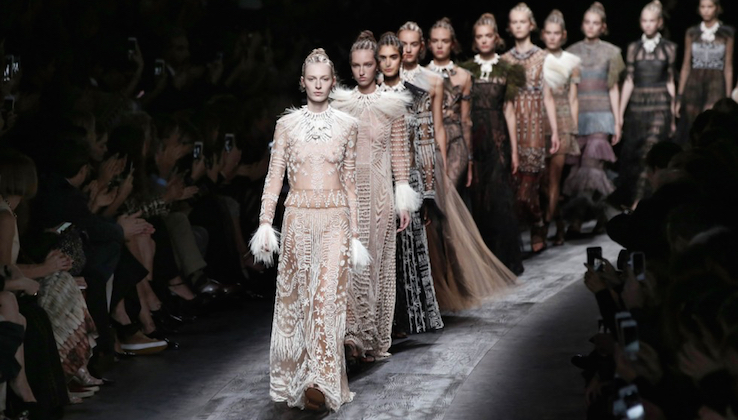Last week, we started to see some of the results of the cost-cutting frenzy that many fashion brands have engaged in over the last year. Don’t forget to subscribe to the Glossy Podcast for interviews with fashion industry leaders and Week in Review episodes, and the Glossy Beauty Podcast for interviews from the beauty industry. –Danny Parisi, sr. fashion reporter
The fruits of cost-cutting
In the last year, brands have significantly upped their focus on profitability and cutting costs. Brands under pressure from reduced consumer spending are looking for ways to spend less in order to improve their margins.
These tactics have run the gamut from removing unprofitable categories to trimming down their workforces. Now, we’re seeing the fruits of those cost-cutting efforts.
Asos, for example, enacted multiple cost cuts in October, including reducing inventory by 15% on its way to its goal of 20%. On Thursday, the brand announced that these efforts had begun to pay off, with core earnings rising by $25 million in the last three months.
Meanwhile, the retail company Frasers Group is planning to cut 200 jobs, around 20% of its workforce, to reduce costs this quarter. And Superdry plans to outsource its struggling e-commerce business to Shopify to cut costs.
Last month, German online fashion retailer Zalando announced that it was within striking distance of profitability, after reducing its losses from $19 million to under $1 million in the last quarter, thanks to aggressive cost-cutting.
Ad position: web_incontent_pos1
For months, we’ve been covering the push toward profitability and the decrease in brands’ spending on customer acquisition and marketing. In the months ahead, we’ll no doubt see more examples of how cost-cutting has impacted brands’ bottom line.
Google targeted by competition commissioner in the EU
In a press conference on Wednesday, the European Union’s competition commissioner accused Google of playing an anticompetitive role in the digital ad business in Europe. The commission had been investigating Google for using its role as a dominant force in digital advertising to squeeze out the competition in favor of its own advertising service.
The commissioner, Margrethe Vestager, said that simply asking Google to alter its practices likely wouldn’t be enough to satisfy the commission, opening up the possibility of requiring Google to divest from its digital ad infrastructure in Europe.
The news called to mind a recent conversation with Lush Cosmetics’ brand director Annabelle Baker. U.K.-based Lush has been one of the most vocal brands against the monopolistic dominance that big tech platforms like Google and Meta have over the digital ad business. Baker explained the brand’s philosophy of pulling away from social platforms like Instagram and digital ad marketplaces like Google. Whether other brands may follow suit by seeking out ways to divest from tech remains unseen, but Google facing increased regulatory scrutiny could accelerate the trend, particularly among European brands.
Ad position: web_incontent_pos2
Valentino returns to separate shows for men’s and women’s fashion
After several years of coed shows, Valentino appears to be splitting up its men’s and women’s fashion shows once more. On Friday, the brand showed at Milan Men’s Fashion Week, with a show dedicated to menswear after three years of combining men’s and women’s.
The show was also a return to Milan after the brand has favored Paris for consecutive seasons.
Despite moving back to a gendered runway lineup, Valentino continued to follow the trend of blurring the lines between men’s and women’s fashion. The show was full of traditionally feminine silhouettes and fabrics, as well as earrings and handbags. September’s fashion shows will provide more insight into the state of his-and-hers runways.




